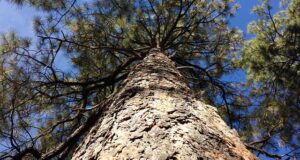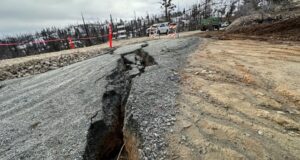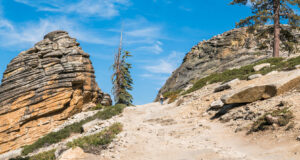CLOVIS – The Bass Lake Ranger District, Sierra National Forest, is preparing to implement the fall/winter burning program, says Acting District Ranger Denise Tolmie. Projects will consist of two activities: pile burning and broadcast burning.
“The objective of burning is to reintroduce low intensity fire to the ecosystem,” said Tolmie. “Prior to European settlement, lightning and Native Americans provided ignition sources resulting in a short interval fire regime of low to moderate intensity fires. These frequent fires maintained surface fuels at low levels and reduced small trees and other vegetation in the understory that could form fuel ladders, which are conducive to crown fires.
“It is believed that under these conditions, ecosystems were more resistant to high intensity, stand-replacing fires such as the recent French Fire. In addition to reducing the risk of uncharacteristically severe wildfires, underburning improves wildlife habitat by promoting the sprouting of grass and shrub forage species.”
Multiple wildlife habitat burns are planned for the fall/winter/spring of 2015-16. The Source-Kinsman Wildlife burn is located south and west of Clearwater Station in the upper Clearwater Creek drainage. This burn will consist of burning crushed brush of manzanita and chaparral.
Burning will be conducted in moderately unstable atmospheric conditions and on Burn Days to provide optimum smoke dispersal. Burning will stop if smoke dispersion becomes a problem and suppression tactics employed if necessary. Stump holes and logs may be mopped up to reduce the smoldering phase of combustion. High-use roads will be monitored for visibility hazards, and traffic control will be provided when necessary.
Pile burning objectives are to remove fuels created during timber harvest, reforestation, and fuels reduction in high value areas such as along Wildland Urban Interface and Nelder Grove Historical Area. The removal of these fuels provides a benefit by reducing the potential of a wildfire that would cause damage to wildlife habitat, watersheds, and private property, says Tolmie.
Pile burning projects are widely dispersed throughout the Ranger District. While many of the projects are located at the higher elevations, some are near populated areas, and may result in a temporary reduction in air quality in the communities of Oakhurst, Fish Camp, Bass Lake, Ahwahnee, North Fork, and surrounding areas.
Burning will be conducted on Burn Days as determined by the San Joaquin Valley Unified Air Pollution Control District, and the Mariposa County Air Pollution Control District. Burn Day determinations are based on atmospheric conditions which provide optimum smoke dispersal, however, normal diurnal wind changes allow the settling of drift smoke in basins and drainages during the late night and early morning hours.
By limiting the number of piles ignited at one time, and by “mopping up” (extinguishing) smoldering piles, it is expected that emissions will not reach unacceptable levels. Actions to reduce visibility hazards include monitoring high use roads and providing traffic control if necessary.



